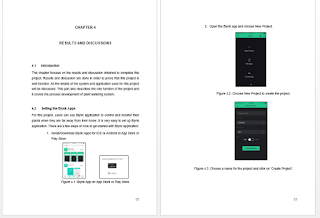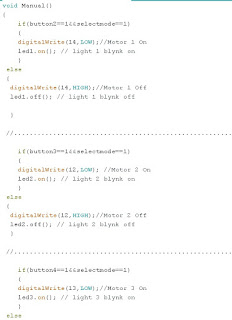OBJECTIVES: 1. To describe the flow of the project.
2. To identify the benefits of this project.
3. To identify the problem statement faced by people regarding watering their plants.
METHODOLOGY: 1. Make a research on the internet or journal regarding the problem faced by people in watering the plants.
2. List the objectives of the project, problem statement, benefit, scope and limitation for this project and the expected outcome.
RESULTS:
1) Objectives:
- To water the plant automatically using Arduino
- To monitor the soil moisture of the soil
- To get the information of the current soil condition using Blynk Application
2) Problem Statement
As for watering plant, a chore is
increasing in time when there are a lot of plants to be watered. Therefore, a
person with a busy lifestyle did not have enough time to water the plant by
themselves. People usually wastage the water when watering their plant due to
supply the water more than the plant required.
Other than that, people who are interested in gardening or those who
plant flowers find it difficult to leave their plants even if they go on
vacation because they are worried that their plants will wilt and eventually
will die. The same thing happens also with flower or plant entrepreneurs, which
is, it is difficult for them to monitor their plants whether they have been
watered or have not yet since they have other plants to be look after too.
3) Benefits
i. Can reduce the
workload to control and water the plants.
ii. Can shorten the
time to water the plants.
iii.Can still
watered the plants if there is nobody at home in a period of time.
iv. Can reduce the water
usage to water the plant.
4) Expected Outcome
At the end of this project, it is
expected that this product will reduce the time for watering the plants around
the house. Besides, the workload for doing the watering chores is reducing.
When there is nobody at home, the machine will continuously water the plants
according to the set-up program.
5) Scope and Limitation
The scope of this project covers the watering
process of plants in the residential area. This project focusses on the timing
and watering process of the plants. Apart from that, the scope of this project is to control plant watering system by
utilizing arduino and in view of Android apps.
For the time being, this prototype can only support 3 pots of plant in a time.
This project is not suitable for
four season country because it is not able to support different kind of weather
and temperature changes on the water and soil.
ANALYSIS & DISCUSSION: For chapter 1 which is introduction, objectives, problem statement, benefit of this project, scope and limitation, and the expected outcome have been detailed in this chapter. Meaning to say, it is the summary of this project.
CONCLUSION: This chapter describe all the objectives, problem statement that related with this project. The flow of this project has been told in this chapter.

































